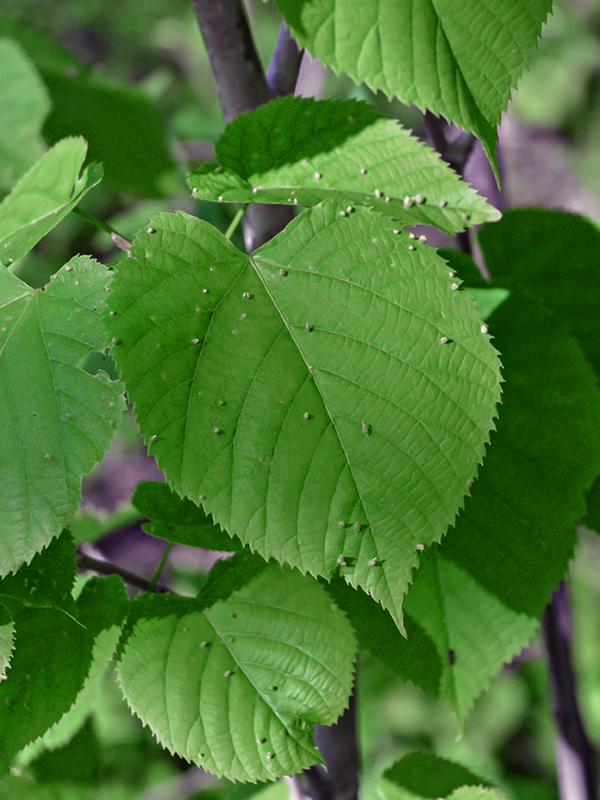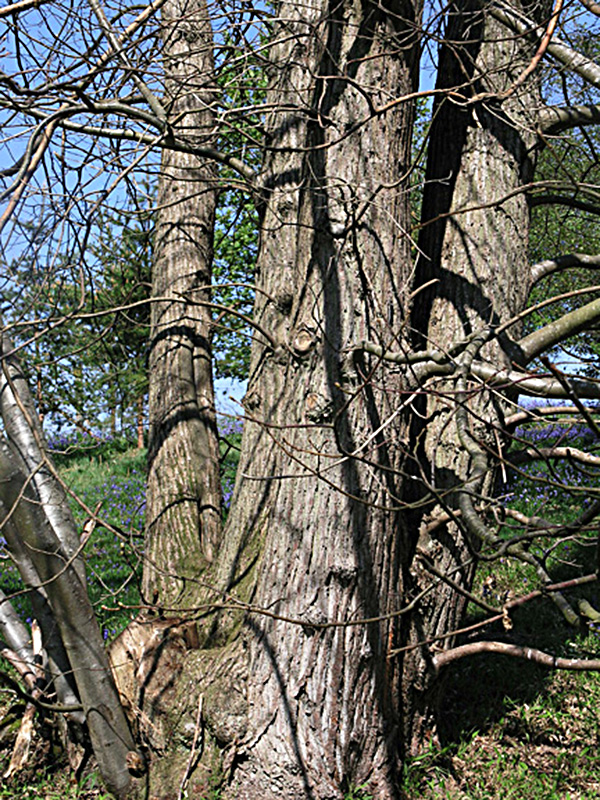| General Description | A large, fast growing weak-wooded tree, usually multi-stem and of little ornamental value although the wood has been used in school shop classes since it is cheap and easy to work with. |
| ID Characteristic | Very large somewhat cordate shaped leaves, multi-stemmed with long coarse bark ridges. |
| Shape | Multi-stemmed, somewhat pyramidal crown. |
| Landscape | Limited landscape use except for naturalisation. |
| Pests | Leaf eating and gall insects seem to love this tree. |
| Notable Specimens | Joany’s Woods, West Williams, Middlesex County, Ontario, Canada. |
| Habitat | Along the edges of fields and forests in rich, geneally moist soil. |
| Bark/Stem Description | Bark has long coarse ridges and is dull grey in colour, usually multi-stemmed. |
| Leaf Description | Large, to about 15-25 cm across, dull light to medium green, lighter underside, often covered in insect galls late in the season. |
| Flower Description | Flowers are quite attractive and fragrant as with most species of Tilia. About 1 cm across, pale yellow with prominat anthers, hanging in clusters. |
| Texture Description | Coarse textured tree. |

